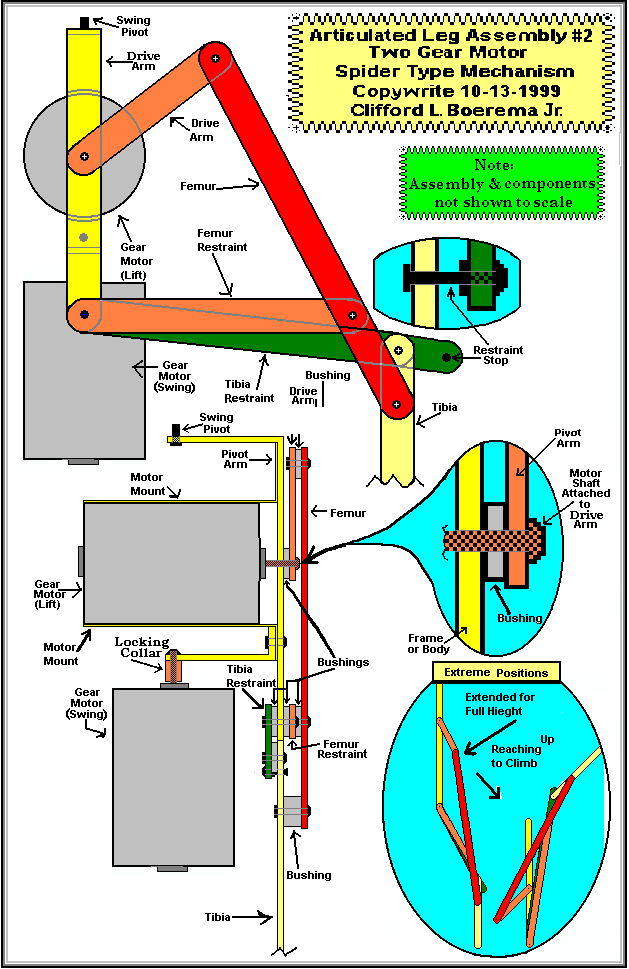 |
 |
 |
 |
 |
 |
 |
 |
 |
 |
 |
 |
 |
 |
 |
 |
 |
 |
 |
 |
 |
 |
 |
 |
 |
 |
 |
 |
 |
 |
 |
 |
 |
 |
 |
 |
 |
 |
 |
 |
 |
 |
 |
 |
 |
 |
 |
 |
 |
 |
 |
 |
 |
 |
 |
|
|
Spider Leg |
|
|
|
The reason for the name should be obvious. |
|
|
|
This leg simply looks like a spider leg. |
|
|
|
My intent in designing this one was to produce |
|
|
|
a leg that would be capable of climbing. |
|
|
|
The insert marked extreme positions on the drawing |
|
|
|
shows the range it has. It has the same |
|
|
 |
|
|
|
|
|
|
degrees of freedom as most two motor |
|
|
|
|
|
legs but with two extremes range. |
|
|
|
|
|
First is it can lift the robot well upward above its normal walking level |
|
|
|
|
|
This can be useful for looking over obstacles |
|
|
|
|
|
or keeping the robot level on surfaces that |
|
|
|
very rough and uneven. |
|
|
Click on thumbnail to view larger image |
|
|
|
|
|
|
The second is the ability to reaching up high. |
|
|
|
Combined with the first, and with the right type of |
|
|
|
sensors,some obstacles could be stepped over and |
|
|
|
even extremely rough, uneven terrain could be |
|
|
|
traversed without the loss of stability. In fact I believe |
|
|
|
that given the right motors, and leg size, it could climb |
|
|
|
stares without to much trouble. |
|
|
|
 |
|
|
|
|
I've considered coming up with some |
|
|
|
|
|
|
type of grasping mechanism to be |
|
|
|
mounted to the end of the leg to allow it to lift and move. |
|
|
|
That way it could double as an arm with a hand. |
|
|
|
Hmmmmmmmmmm. |
|



